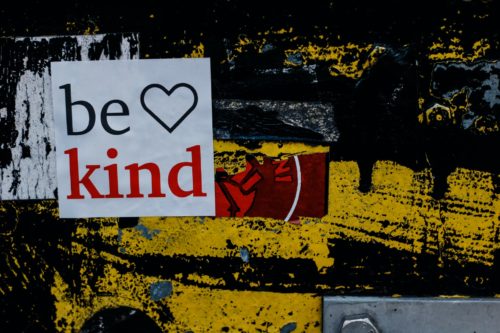Defining professional interaction doesn’t sound too important, because really, who would need an explanation of something that is so basic? Right? Wrong.
The term itself undertakes multiple meanings. While to some it may be the sharing of concepts, views, and experiences that occur amongst the people working in the same work environment. Granted, the outcome of which should be the comprehension of the shared experiences and learning something from it. Where as to some, it is the exchange between people that reflects upon themselves and the people and companies affiliated with them.
Importance of Professionalism
Professional interactions also play a vital role in forming an impression on the people in contact. The chances of the discussions being successful also greatly rely on the level of professionalism one treat the other with. And on the contrary, working with a negative leader, someone that is lacking professional and effective communication skills, can be destructive.
Professionalism means that you know that in your work environment you will be judged solely based on your professional abilities, whether you are providing value and contributing or not, and that is the only consideration. Putting aside politics and opinions that you or others have on each other, only focusing on the value that one can provide.
But is that how it usually works in firm and organizations?
Is that even possible to reach such level of professional neutrality?
Moreover, as an employee or a manager, can you really disconnect your non-professional personality traits and skills in the way that you are expressing yourself? Wouldn’t that affect your ability to make deeper and more authentic relationships with your co-workers? Relationships that can empower you and the organization that you are a part of?
Roots of Professional Interaction
In a global business and career realities, where you are competing on the same positions with people from all around the world, it is imperative to recognize that to climb the ladder of success, professionalism is key.
As aforementioned, one needs to be always in a good and productive mood, ready to negotiate and entertain new ideas, be able to successfully pitch and ‘sell’ these ideas, be able to work hard, be loyal, attentive to others as a good team player, and need to treat others with the utmost respect – which is basic human behavior too.
But a person doesn’t only look on the company’s success and future, rather than looking on their own success and future as well, right? And what can you do when some people in your work environment are not only preventing you from supporting your organization’s goals, but to support you own goals and targets?
What do you do when there are people that you don’t like so much, and they don’t like you? Or even worse, you simply can’t stand them, and perhaps they feel the same about you? It’s obviously not professional to treat someone in a manner that is not based on respect, but can you really hide how you feel all the time?
The fact is that a person has to put up a mask whilst interacting with people for their own personal gains. This, in turn, proves that indeed, there is no such thing as communications without any biases. Hence giving more meaning to the phrase “Professional Interactions: Do they even exist?”
Personal Biases and Its types
The word, bias, in this case, refers to a tendency that makes the person ignore the sentiments of other people for personal gains. Personal gains do not necessarily have to be something tangible, as some, if not most, of the biases are survival-oriented, as our minds are classifying everything we experience to ensure our survival.
There are numerous types of biases, but when looking at those that are relevant to our matter, they mainly divide into two parts:
- Conscious Biases
- Subconscious Biases.
According to research led by Kimberly Papillon, conscious biases root up from unfair and undesirable past experiences. They mainly target the people involved in bitter memories or just overall people who remind one of the same incidents. This is showcased through multiple ways, be it physical or verbal abuse – in extreme cases. For mild circumstances, segregation and ignorance are often noticed.
These conscious biases are mainly towards the women of the society or the people of different races. Despite there being laws to protect these minorities, these prejudices and intolerant acts have not subsided. Though it is possible to say that the consequences of these aren’t as much in the workplaces as there are in the outside world. But then again, we certainly can’t claim that these don’t exist or overlook them.
Every passing day, people make decisions. They aren’t always the right ones, but based on a person’s judgment, they might have been the right option at that very instant. These verdicts we give out may be influenced by opinions that reside in our minds, without our knowledge. They aren’t always intentional, however, their effects can be seen in the everyday choices that we continue to make. This unintentional stimulus can be termed as subconscious bias.
How the biasness influences decision making
As stated previously, the bias that affects us the most is the one that we don’t realize we encompass. How can you avoid doing something that you are not even aware of?
Moving on towards how these alterations stimulate us:
- A person might be in dire need of a job, which gives birth to a personality of him that appeases the people, indirectly feeding into a personal prejudice.
- Giving false hopes to people about who you are as a person in the business world.
- At times when you don’t exactly want to deal with people, the orders that you give out, the feedback you provide, all of that affects people, one way or another. Sequentially, contributing to the demise of the business in tiny bits.
- It can affect how we react to people, how we treat them, and how we might be secluding them from the group, all because of the bias that we have harbored unknowingly.
- People working at a lower level than you might also be targeted in case you unknowingly – or knowingly – fail to give them a proper demonstration on how to perform certain tasks.
- Sometimes we find looks appealing and as a result, we hire, promote, or give incentives to only those who are appealing to our eyes. This is a huge drawback in the industry, as per the reports suggest.
- There might be prejudiced feedback based on gender. Women are often seen as either more fragile than men, or are expected to be more aggressive towards criticism. This often overlooks their capabilities as employees.
- A person who’s CV the employer has seen and in case it mentions any medical issue, it will always remain in the back of the lead’s head. This results in excluding the said person from tasks, without putting their abilities to test.
These paradoxical – granted unintentional – decision making leads to the demise of businesses. This reduces the chances of innovations and diversity.
Again, this significantly reduces all sorts of professionalism present, in turn giving a rise to the question if professional interactions even exist? Or are these interactions just a mere conversation or decision that covers up the real thoughts of a person.
How to understand and control biases?
Understanding these biases is immensely important, considering how they drag, not just one company but an entire global society under economic distress.
To control the subconscious biases, one must at first realize that they exhibit this destructive feature. The best way to do that is to take “The Implicit Association Test (IAT)” which is a consequence of multiple great scholars working together. The person needs to keep an open mind during all this, because otherwise, there might not be any progress.
Secondly, one must be willing to become a better version of themselves. This can be done by being aware of what decisions they’re making and their possible outcomes. People often give out verdicts without realizing what it would contribute in the long run. Therefore, awareness is doubtlessly an important factor in the whole scenario. To change, in any domain, is not easy, but even tiny increments can add up to a massive life changing momentum.
Re-examine the CVs of people a biased person has hired to look for any flawed patterns. This could help in identifying where the biasness roots begin. Similarly, the decisions of a person will also aid in identifying what a person’s thought process works like.
Taking part in active conversations with the people these biases work against can greatly – and very efficiently – reduce a lot of problems that are ingrained in the minds of people. Women and people of different ethnicities should have key roles in the administrative centers. Through diversity, the organization can more easily open itself to new ideas, paradigms, and make itself more accessible to talent from any background.
Lastly, we believe that taking actions against people who are seen or accused of misconduct will deliver the right message for the rest of the employees in terms of passing judgments and biasness.
In Conclusion
As seen how greatly biased opinions affect the life of not just one person but a whole company, we can reiterate the question at hand, professional interaction: does it even exist? The answer to it is, clearly, it doesn’t. How? We have seen some serious cases above on how people harbored such enigmatic beliefs, that too unknowingly, yet they continued to act on them. Professionalism stems from within, when you transcend above your ego. Whereas, the deep-rooted biasness destroys the whole idea of it.














